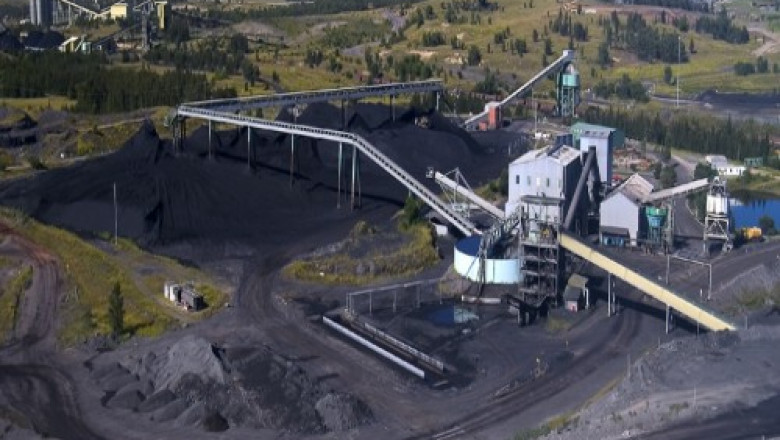views
Coal remains a vital energy resource, but how can we use it sustainably?
A Brief History of Coal Use
Coal has powered industrialization and economic growth for over 200 years. Originally mined to heat homes and power steam engines during the Industrial Revolution, coal became a primary fuel for electricity generation in the 20th century. China and India especially rely heavily on coal to meet rising energy demands from rapid development. In the U.S., coal supplies over a third of electricity. However, burning coal emits greenhouse gases and other pollutants that endanger public health and accelerate climate change. For coal to have a future, its environmental impacts must be reduced.
Capture and Storage: Trapping Emissions Before They Reach the Atmosphere
Clean Coal Technology is promising approach is carbon capture and storage (CCS), which involves trapping CO2 emissions from large stationary sources like power plants and injecting them into deep underground geological formations for permanent storage. Several full-scale CCS projects have demonstrated the technology's viability. For example, the Boundary Dam Power Station in Saskatchewan captures over 90% of CO2 from a portion of its operations. The CO2 is then piped 80km away for storage 2km beneath the earth's surface. If deployed widely, CCS could allow coal plants to operate with near-zero emissions. However, the cost of retrofitting existing plants or building new CCS-equipped plants remains relatively high. Further research aims to reduce these costs to incentivize greater CCS adoption.
Supercritical Combustion: More Efficient Burning Means Less Emissions
Another approach is boosting combustion efficiency. Newer "supercritical" and "ultrasupercritical" plant designs operate at higher temperatures and pressures than traditional subcritical plants. This allows them to burn coal more completely and generate more power from less fuel. As a result, they produce fewer emissions per unit of electricity generated. Japan's newest coal plants achieve world-leading efficiencies over 45%. The U.S. is working to commercialize plants with efficiencies up to 60%. Higher efficiencies slash emissions and save on fuel costs. Supercritical technology offers a clean, cost-effective way to upgrade older subcritical plants worldwide.
Innovations in Carbon Capture
Researchers are exploring novel ways to capture CO2 that could make CCS cheaper and more practical. One method uses CO2-selective membranes that only allow carbon dioxide to pass through at lower energy costs than conventional absorption techniques. Solid sorbents are also being developed that can adsorb CO2 at lower temperatures than current solvent-based systems. Some sorbents even selectively capture CO2 during combustion in integrated "oxy-fuel" plants that could eliminate the need for a separate capture unit. Innovations like these advanced materials could help surmount economic barriers and enable CCS to play a bigger role in reducing emissions from coal power.
Transforming Coal Into Usable Products and Fuels
Rather than viewing CO2 as a waste product, some explore converting it into value-added goods. Synthesizing fuels from captured CO2 and hydrogen could produce liquid transportation fuels like gasoline or jet fuel. Polymeric materials could also be manufactured from coal-derived CO2. Utilizing carbon dioxide as a chemical feedstock acknowledges its potential as a resource rather than just a pollutant. Other options being researched turn coal directly into syngas or liquid fuels through gasification and further processing like the Fischer-Tropsy reaction. These "coal to x" technologies promise not only environmental benefits but also economic development opportunities. They pave a way for coal to exit the power sector while its carbon is still put to productive use.
Modernizing Existing Plants and Retiring Outdated Capacity
While newer plants can curb emissions, many developing nations operate fleets aging subcritical units with outdated pollution controls. The U.S. also relies on plants decades old on average. Upgrading emissions controls at existing plants through selective catalytic reduction, flue gas desulfurization, and efficiency improvements represents a significant low-hanging mitigation opportunity worldwide. However, the oldest and dirtiest plants may eventually need retirement if more stringent long-term carbon policies take effect. Carefully managed transitions can minimize job losses while switching to cleaner options like natural gas, renewables or new coal plants featuring modern techniques described here. A mix of upgrades alongside strategic retirements offers a pragmatic path forward.
Coal continues providing affordable baseload power globally but faces challenges from its carbon and pollution impacts. Clean coal technologies showcase viable solutions to address these concerns through carbon capture, improved combustion methods, and transforming coal into other useful forms. Widespread adoption still requires overcoming economic hurdles. However, with further innovation and supportive policies, coal need not be abandoned but instead burned or utilized more sustainably. A balanced, multi-pronged strategy combining technology, phasing out the worst plants, and development of alternatives can help coal play its role amid energy transitions and climate action worldwide. Overall, promising clean coal options exist to responsibly meet growing demand while protecting environmental and public health.
Get This Report in Japanese Language: クリーン・コール・テクノロジー
Get This Report in Korean Language: 청정 석탄 기술
About Author:
Priya Pandey is a dynamic and passionate editor with over three years of expertise in content editing and proofreading. Holding a bachelor's degree in biotechnology, Priya has a knack for making the content engaging. Her diverse portfolio includes editing documents across different industries, including food and beverages, information and technology, healthcare, chemical and materials, etc. Priya's meticulous attention to detail and commitment to excellence make her an invaluable asset in the world of content creation and refinement. (LinkedIn- https://www.linkedin.com/in/priya-pandey-8417a8173/)






















Comments
0 comment